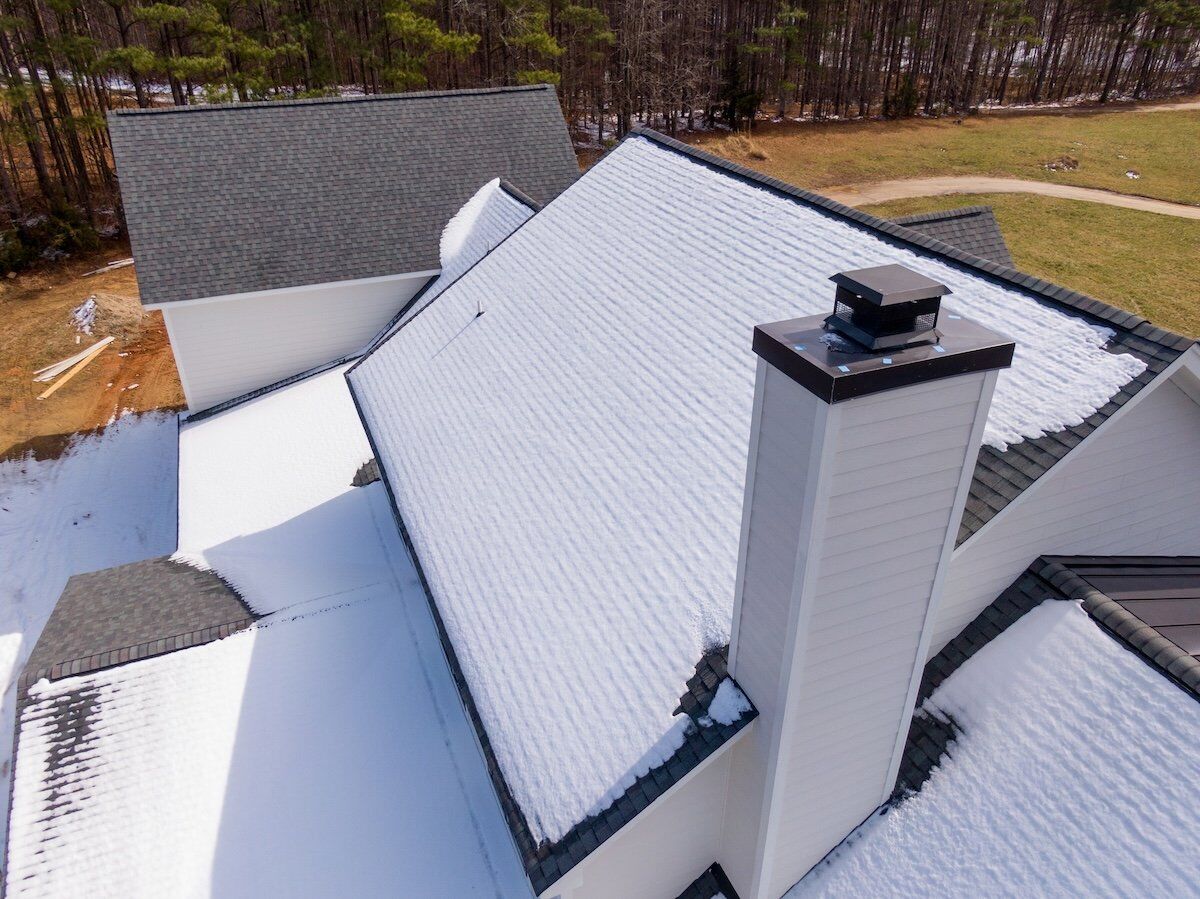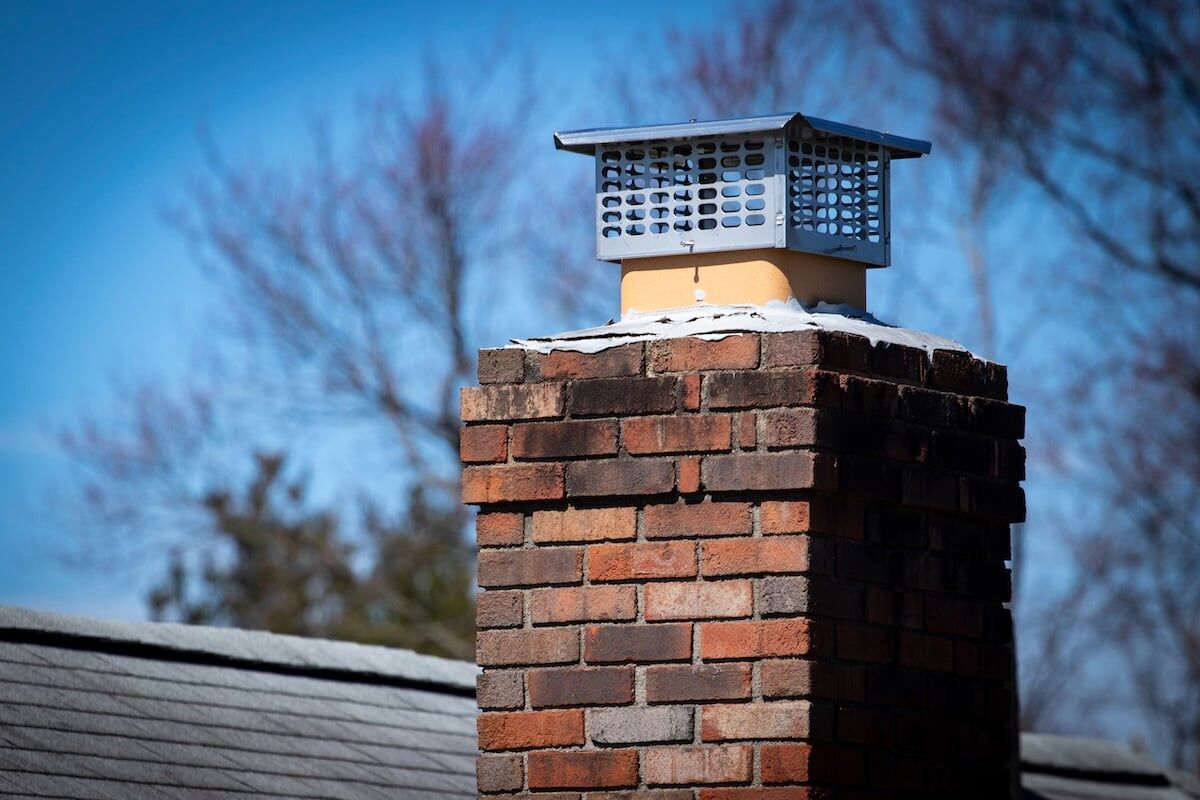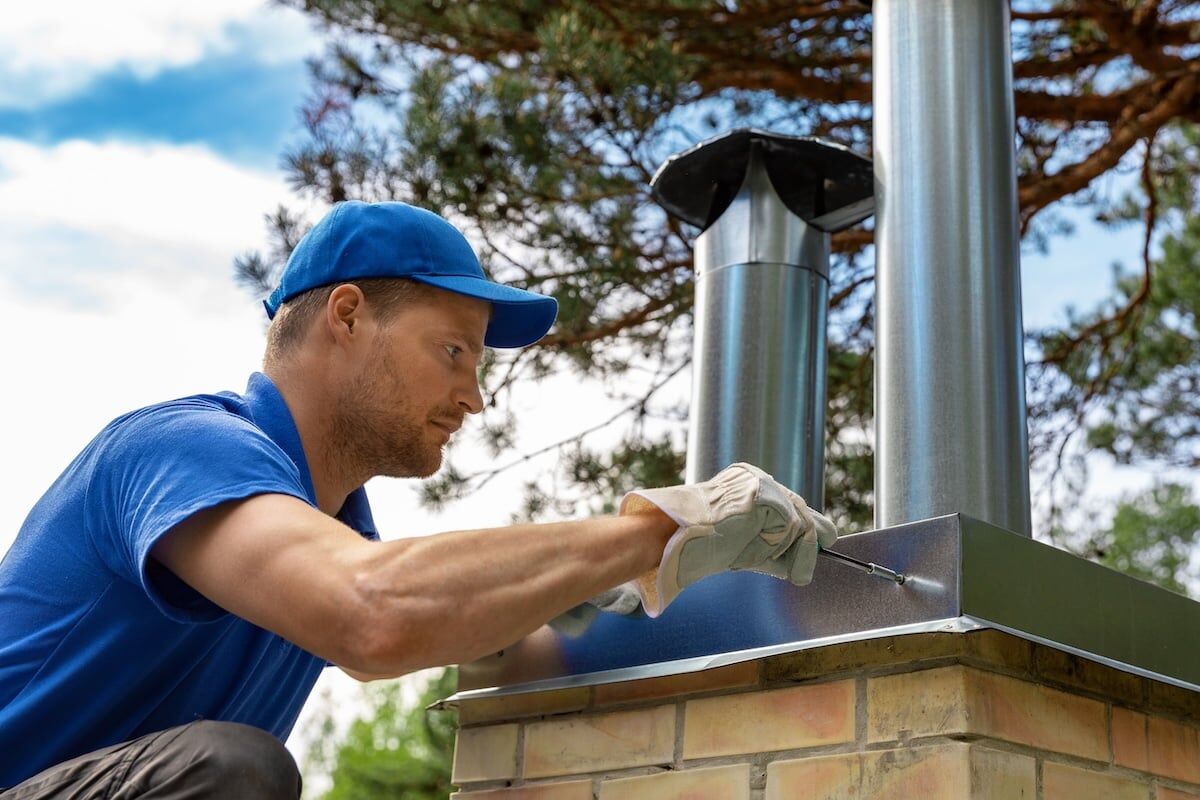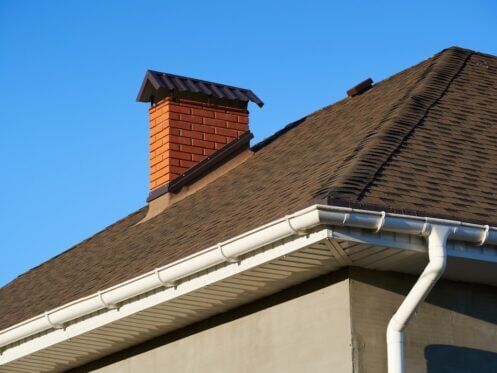A chimney cap is one of the simplest yet most effective ways to protect your roof and home from water damage. While it may seem like a small accessory sitting on top of your chimney, it plays a critical role in preventing costly repairs. Without a cap, rain, snow, and debris can enter your chimney system, leading to leaks, structural damage, and even mold growth. For Indiana homeowners, where seasonal storms and freeze–thaw cycles are common, a chimney cap is not optional, it’s essential.
- Water protection: Chimney caps keep moisture out of your chimney and roof system.
- Extended roof life: Preventing leaks helps preserve shingles, flashing, and decking.
- Additional benefits: Chimney caps also keep animals, debris, and sparks under control.
🤔 What Is a Chimney Cap?
A chimney cap is a protective cover installed at the top of a chimney. Typically made from stainless steel, copper, or galvanized metal, the cap features a solid lid with mesh sides. This simple design allows smoke and gases to escape while blocking rain, snow, animals, and debris. Some chimney caps also include spark arrestors, which reduce fire risk by containing stray embers.
Although inexpensive compared to other roof components, chimney caps provide outsized protection. They defend not just the chimney itself, but also the roof system, attic, and interior of the home.

💧 How Chimney Caps Prevent Water Damage
Water is one of the greatest threats to your roof and chimney. A cap acts as the first line of defense, stopping water intrusion before it has the chance to cause harm.
Blocking Rain and Snow
Without a chimney cap, precipitation falls directly into the chimney flue. Over time, this moisture seeps into masonry, causing cracks, spalling, and leaks that spread into the roof structure. In Indiana winters, freeze–thaw cycles make this worse, as trapped water expands and fractures brick and mortar. A properly installed cap diverts rain and snow, keeping the flue and roof dry.
Protecting Flashing and Roof Decking
The area where your chimney meets the roof, sealed by flashing, is a notorious leak point. When water enters through the chimney, it often seeps into flashing seams and roof decking, weakening these vulnerable areas. A cap reduces the amount of water exposure, extending the lifespan of both flashing and the roof itself.
Preventing Interior Damage
Moisture entering through an uncapped chimney doesn’t stop at the roof. It can travel downward, causing stains on ceilings, warped drywall, and mold growth in attics. Homeowners often mistake these symptoms for a roof leak, when in reality, the problem began at the chimney.
✅ Other Benefits of a Chimney Cap
Although water protection is the primary advantage, chimney caps deliver additional benefits that make them even more valuable.
- Animal prevention: Birds, squirrels, and raccoons often try to nest inside open chimneys, causing blockages and damage.
- Debris control: Leaves, twigs, and dirt are kept out, reducing the chance of clogs and fires.
- Spark arresting: Mesh sides prevent embers from escaping and landing on the roof, reducing fire hazards.
- Improved draft: A cap can help regulate airflow, reducing downdrafts and improving indoor air quality.
👉 4 Types of Chimney Caps
Not all chimney caps are created equal. Choosing the right type ensures long-lasting protection and reliable performance.
1. Stainless Steel Caps
- Durability: Highly resistant to rust and corrosion, making them ideal for Indiana’s wet climate.
- Cost: Mid-range investment but long-lasting.
- Best for: Homeowners wanting a reliable, low-maintenance option.
2. Copper Caps
- Appearance: Offers a distinctive, elegant look that ages with a natural patina.
- Durability: Extremely long lifespan with minimal maintenance.
- Cost: Higher initial price but excellent long-term value.
- Best for: Historic homes or homeowners prioritizing aesthetics.

3. Galvanized Metal Caps
- Affordability: Budget-friendly option.
- Drawbacks: Prone to rust over time; shorter lifespan.
- Best for: Temporary solutions or homeowners on a tight budget.
4. Custom Caps
- Design flexibility: Built to match the size, shape, and style of your chimney.
- Performance: Ensures proper fit for maximum protection.
- Best for: Unique or oversized chimneys.
❗️ Risks of Going Without a Chimney Cap
Failing to install or replace a damaged chimney cap leaves your home vulnerable.
- Roof leaks: Moisture infiltrates flashing and decking, leading to costly roof repairs.
- Structural decay: Brick and mortar degrade quickly when exposed to constant moisture.
- Mold and mildew: Damp chimneys increase humidity, creating ideal mold conditions.
- Pest infestations: Birds and rodents nesting inside chimneys create blockages and health hazards.
- Fire hazards: Without a mesh barrier, sparks can escape and ignite nearby roofing materials.
The relatively low cost of installing a chimney cap is far less than the expense of repairing extensive water and roof damage.

🛠️ Maintenance and Inspection of Chimney Caps
Like any roof component, chimney caps require maintenance to remain effective.
- Inspect annually: Look for rust, loose fittings, or damaged mesh.
- Clear debris: Remove leaves or blockages after storms.
- Check flashing: Ensure the area around the chimney is watertight.
- Replace when needed: Bent, rusted, or missing caps should be replaced immediately.
Routine inspections by a roofing contractor ensure your chimney cap continues to provide full protection.
⭐️ When to Install or Replace a Chimney Cap
Chimney caps are typically installed when a new roof is built, but they can be added or replaced at any time. Signs you need a cap or a replacement include:
- Visible rust or corrosion on the existing cap.
- Missing or loose caps after a storm.
- Signs of water damage around the chimney or in the attic.
- Animal activity inside the chimney flue.
A roofing professional can quickly assess your system and recommend the best cap for your home.
💪 Protect Your Roof With Professional Installation
A chimney cap is a small investment with significant returns. By preventing water intrusion, extending the life of your roof, and stopping pests and debris, it delivers long-lasting protection. But to work effectively, caps must be installed and sealed correctly.
At Indy Roof & Restoration, we specialize in protecting Indiana homes from water damage with comprehensive roofing solutions. Our team installs high-quality chimney caps, inspects flashing, and ensures your roof system is fully watertight. Don’t wait until leaks or mold appear, contact us today to schedule an inspection and safeguard your home with a properly installed chimney cap.

